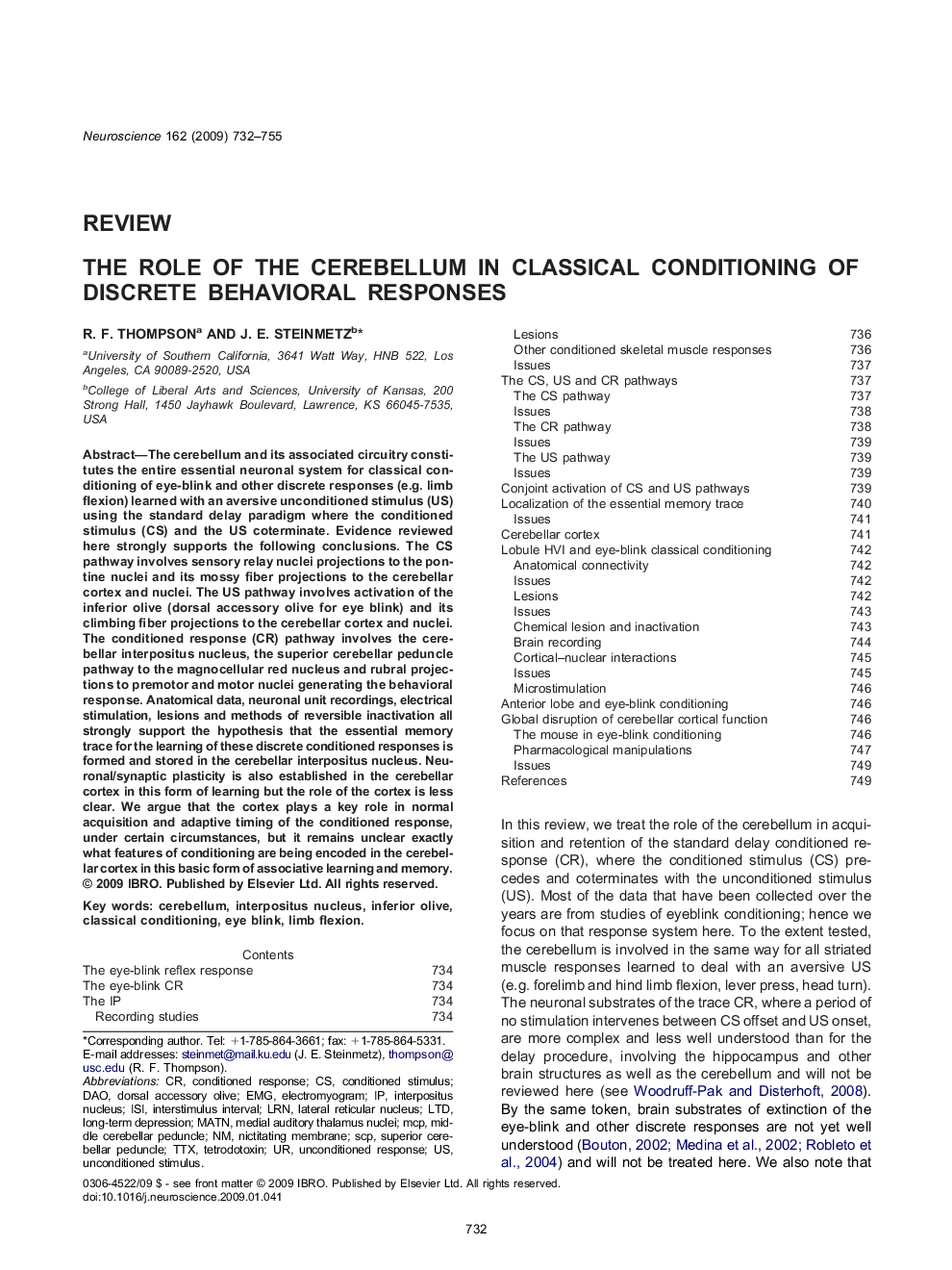| کد مقاله | کد نشریه | سال انتشار | مقاله انگلیسی | نسخه تمام متن |
|---|---|---|---|---|
| 6278103 | 1295793 | 2009 | 24 صفحه PDF | دانلود رایگان |
عنوان انگلیسی مقاله ISI
The role of the cerebellum in classical conditioning of discrete behavioral responses
دانلود مقاله + سفارش ترجمه
دانلود مقاله ISI انگلیسی
رایگان برای ایرانیان
کلمات کلیدی
MCPdorsal accessory oliveLRNTTXSCPISI - آی اس آیsuperior cerebellar peduncle - اسب سواری مخچه بزرگlong-term depression - افسردگی طولانی مدتEMG - الکترومیوگرافیelectromyogram - الکترومیوگرافیtetrodotoxin - تترو دوتوکسین DAO - دائوinferior olive - زیتون ناقصMiddle cerebellar peduncle - ستون مرکزی مخچهClassical conditioning - شرطیشدن کلاسیک، شرطیشدن واکنشی، شرطیشدن نوع Inictitating membrane - غشای محرکInterstimulus interval - فاصله بین فاصلهLTD - محدودunconditioned stimulus - محرک بی قید و شرطconditioned stimulus - محرک شرطیCerebellum - مخچهInterpositus nucleus - هسته بین هسته ایlateral reticular nucleus - هسته رتیکال جانبیunconditioned response - پاسخ بی قید و شرطconditioned response - پاسخ مشروطEye blink - چشم چشمک زدن
موضوعات مرتبط
علوم زیستی و بیوفناوری
علم عصب شناسی
علوم اعصاب (عمومی)
پیش نمایش صفحه اول مقاله

چکیده انگلیسی
The cerebellum and its associated circuitry constitutes the entire essential neuronal system for classical conditioning of eye-blink and other discrete responses (e.g. limb flexion) learned with an aversive unconditioned stimulus (US) using the standard delay paradigm where the conditioned stimulus (CS) and the US coterminate. Evidence reviewed here strongly supports the following conclusions. The CS pathway involves sensory relay nuclei projections to the pontine nuclei and its mossy fiber projections to the cerebellar cortex and nuclei. The US pathway involves activation of the inferior olive (dorsal accessory olive for eye blink) and its climbing fiber projections to the cerebellar cortex and nuclei. The conditioned response (CR) pathway involves the cerebellar interpositus nucleus, the superior cerebellar peduncle pathway to the magnocellular red nucleus and rubral projections to premotor and motor nuclei generating the behavioral response. Anatomical data, neuronal unit recordings, electrical stimulation, lesions and methods of reversible inactivation all strongly support the hypothesis that the essential memory trace for the learning of these discrete conditioned responses is formed and stored in the cerebellar interpositus nucleus. Neuronal/synaptic plasticity is also established in the cerebellar cortex in this form of learning but the role of the cortex is less clear. We argue that the cortex plays a key role in normal acquisition and adaptive timing of the conditioned response, under certain circumstances, but it remains unclear exactly what features of conditioning are being encoded in the cerebellar cortex in this basic form of associative learning and memory.
ناشر
Database: Elsevier - ScienceDirect (ساینس دایرکت)
Journal: Neuroscience - Volume 162, Issue 3, 1 September 2009, Pages 732-755
Journal: Neuroscience - Volume 162, Issue 3, 1 September 2009, Pages 732-755
نویسندگان
R.F. Thompson, J.E. Steinmetz,